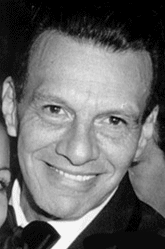
The mind is the set of faculties responsible for mental phenomena. Often the term is also identified with the phenomena themselves. These faculties include thought, imagination, memory, will and sensation. They are responsible for various mental phenomena, like perception, pain experience, belief, desire, intention and emotion. Various overlapping classifications of mental phenomena have been proposed. Important distinctions group them together according to whether they are sensory, propositional, intentional, conscious or occurrent. Minds were traditionally understood as substances but it is more common in the contemporary perspective to conceive them as properties or capacities possessed by humans and higher animals. Various competing definitions of the exact nature of the mind or mentality have been proposed. Epistemic definitions focus on the privileged epistemic access the subject has to these states. Consciousness-based approaches give primacy to the conscious mind and allow unconscious mental phenomena as part of the mind only to the extent that they stand in the right relation to the conscious mind. According to intentionality-based approaches, the power to refer to objects and to represent the world is the mark of the mental. For behaviorism, whether an entity has a mind only depends on how it behaves in response to external stimuli while functionalism defines mental states in terms of the causal roles they play. Central questions for the study of mind, like whether other entities besides humans have minds or how the relation between body and mind is to be conceived, are strongly influenced by the choice of one's definition.

George Ivanovich Gurdjieff was a Russian philosopher, mystic, spiritual teacher, and composer of Armenian and Greek descent, born in Alexandropol, Russian Empire. Gurdjieff taught that most humans do not possess a unified consciousness and thus live their lives in a state of hypnotic "waking sleep", but that it is possible to awaken to a higher state of consciousness and achieve full human potential. Gurdjieff described a method attempting to do so, calling the discipline "The Work" or "the System". According to his principles and instructions, Gurdjieff's method for awakening one's consciousness unites the methods of the fakir, monk and yogi, and thus he referred to it as the "Fourth Way".

Pyotr Demianovich Ouspenskii, was a Russian esotericist known for his expositions of the early work of the Greek-Armenian teacher of esoteric doctrine George Gurdjieff. He met Gurdjieff in Moscow in 1915, and was associated with the ideas and practices originating with Gurdjieff from then on. He taught ideas and methods based in the Gurdjieff system for 25 years in England and the United States, although he separated from Gurdjieff personally in 1924, for reasons that are explained in the last chapter of his book In Search of the Miraculous.
John Godolphin Bennett was a British scientist, technologist, industrial research director, and author. He is best known for his books on psychology and spirituality, particularly on the teachings of G. I. Gurdjieff. Bennett met Gurdjieff in Istanbul in October 1920 and later helped to co-ordinate the work of Gurdjieff in England after the guru had moved to Paris. He also was active in starting the British section of the Subud movement, and co-founded its British headquarters.
The Fourth Way is an approach to self-development developed by George Gurdjieff over years of travel in the East. It combines and harmonizes what he saw as three established traditional "ways" or "schools": those of the body, the emotions, and the mind, or of fakirs, monks and yogis, respectively. Students often refer to the Fourth Way as "The Work", "Work on oneself", or "The System". The exact origins of some of Gurdjieff's teachings are unknown, but various sources have been suggested.

A subtle body is a "quasi material" aspect of the human body, being neither solely physical nor solely spiritual, according to various esoteric, occult, and mystical teachings. This contrasts with the mind–body dualism that has dominated Western thought. The subtle body is important in the Taoism of China and Dharmic religions such as Hinduism, Buddhism, and Jainism, mainly in the branches which focus on tantra and yoga, where it is known as the Sūkṣma-śarīra. However, while mostly associated with Asian cultures, non-dualistic approaches to the mind and body are found in many parts of the world.

The astral body is a subtle body posited by many philosophers, intermediate between the intelligent soul and the mental body, composed of a subtle material. In many recensions the concept ultimately derives from the philosophy of Plato though the same or similar ideas have existed all over the world well before Plato’s time: it is related to an astral plane, which consists of the planetary heavens of astrology. The term was adopted by nineteenth-century Theosophists and neo-Rosicrucians.
In esoteric cosmology, a plane is conceived as a subtle state, level, or region of reality, each plane corresponding to some type, kind, or category of being.

Samael Aun Weor, born Víctor Manuel Gómez Rodríguez, was a spiritual teacher and author of over sixty books of esoteric spirituality. He taught and formed groups under the banner of "Universal Gnosticism", or simply gnosis. A prolific author of syncretistic books, Gómez first made a name in the early gnostic movement in his natal country of Colombia, before moving to Mexico in 1956, where his movement gained increased popularity, and his works became popular among practitioners of occultism and esotericism, and were translated to other languages.
The term involution refers to different things depending on the writer. In some instances it refers to a process that occurs prior to evolution and gives rise to the cosmos, in others an aspect of evolution, and still others a process that follows the completion of evolution in the human form.

The Septenary in Helena Blavatsky's teachings refers to the seven principles of man. In The Key to Theosophy she presents a synthesis of Eastern and Western ideas, according to which human nature consists of seven principles. These are:

Integral yoga, sometimes also called supramental yoga, is the yoga-based philosophy and practice of Sri Aurobindo and The Mother. Central to Integral yoga is the idea that Spirit manifests itself in a process of involution, meanwhile forgetting its origins. The reverse process of evolution is driven toward a complete manifestation of spirit.
The mental body is one of the subtle bodies in esoteric philosophies, in some religious teachings and in New Age thought. It is understood as a sort of body made up of thoughts, just as the emotional body consists of emotions and the physical body is made up of matter. In occult understanding, thoughts are not just subjective qualia, but have an existence apart from the associated physical organ, the brain.
The mental plane, or world of thought, in Hermeticism, Theosophical, Rosicrucian, Aurobindonian, and New Age thought refers to the macrocosmic or universal plane or reality that is made up purely of thought or mindstuff. In contrast to Western secular modernist and post-modern thought, in occult and esoteric cosmology, thoughts and consciousness are not just a byproduct of brain functioning, but have their own objective and universal reality quite independent of the physical. This reality itself constitutes only one gradation in a whole series of planes of existence. In most such cosmologies and explanations of reality, the mental plane is located between, and hence is intermediate between, the astral plane below and the higher spiritual realms of existence above.

The Fourth Way (1957) is a book about the Fourth Way, a system of self-development as introduced by Greek-Armenian philosopher G.I. Gurdjieff. It is a compilation of the lectures of P. D. Ouspensky at London and New York City between the years 1921 through 1946, published posthumously by his students in 1957.

The Ray of Creation is an esoteric cosmology which was taught by G. I. Gurdjieff. It is a diagram which better represents the place which Earth occupies in the Universe. The diagram has eight levels, each corresponding to Gurdjieff's Law of Octaves.
William Patrick Patterson is a spiritual teacher of the Fourth Way, an esoteric teaching of self-development brought to the West by G. I. Gurdjieff. Patterson is also an author, filmmaker and speaker on spiritual themes, including the Fourth Way, being and becoming, Advaita Vedanta, self-awakening, self-observation, esoteric Christianity, and conscious-body-breath-impressions. He is the editor-in-chief of The Gurdjieff Journal.

The Fourth Way enneagram is a figure published in 1949 in In Search of the Miraculous by P.D. Ouspensky, and an integral part of the Fourth Way esoteric system associated with George Gurdjieff. The term "enneagram" derives from two Greek words, ennea (nine) and gramma, and was coined by Gurdjieff in the period before the 1940s.

The Study Society is registered with the Charity Commission as Registered Charity Number 1155498. Its stated objects are for the public benefit:
- to advance the education of the public in religion, science, philosophy and the arts.
- the promotion of moral and spiritual welfare.
The attention schema theory (AST) of consciousness is an evolutionary and neuropsychological scientific theory of consciousness which was developed by neuroscientist Michael Graziano at Princeton University. It proposes that brains construct subjective awareness as a schematic model of the process of attention. The theory is a materialist theory of consciousness. It shares similarities with the illusionist ideas of philosophers like Daniel Dennett, Patricia Churchland, and Keith Frankish.











